Photographs: Pawan Kumar/Reuters Shishir Asthana in Mumbai
On Feb 26, SC issued an arrest warrant against Subrata Roy after he failed to turn up in court for hearing.
Sahara chief Subrata Roy’s days of evading the law is finally over. The Supreme Court issued a non-bailable warrant against the Sahara chief after he failed to appear in court.
The irritation of the judges on Roy’s evasion tactics can be understood from their statement where they told Roy’s counsel that 'even if we retire; we will ensure the order to be implemented'.
Along with the Supreme Court the only reason that Subrata Roy will be behind bars is because of the hard work of a whole-time director of Securities and Exchange Board of India, K M Abraham. It was Abraham’s water tight investigation in the entire Sahara OFCD (optionally fully-convertible debentures) issue that the case might see its logical end.
Before we look at the chronological events that led to this Supreme Court order, an explanation of OFCD is needed.
OFCDs are optionally fully convertible debentures. These are issued by the company to potential investors in order to raise money. OFCD holders can become shareholders of the company if they chose to do so.
Generally (which is true in the case of Sahara) there is no asset marked against such investment, in other words they are unsecured in nature and in case of a default and liquidation of the company they will be one of the last stakeholders to be refunded.
Click on NEXT for more...
10 things you need to know about the Sahara row
Image: Subrata Roy (R), chairman of Sahara India, with wife Swapna.Photographs: Reuters
Sahara’s case is all about OFCD and its investor. But its root is in a ruling by the Reserve Bank of India in 2008. Here is a chronological list of how events unfolded from 2008 to the issuance of non-bailable warrant to Sahara chief.
1. In 2008, RBI debarred Sahara India Financial Corporation from raising fresh deposits. Growth of Sahara’s empire was always a mystery; many believed it ran a ponzi scheme by collecting funds from investors. The group needed continuous flow of fresh funds to keep it afloat.
With RBI closing a door on the group from collecting deposits from the people, the group needed a financial instrument that would be out of the purview of RBI but still get access to public fund.
2. That is when Sahara thought of issuing OFCDs by floating two companies – Sahara India Real Estate Corporation (SIREC) and Sahara Housing Investment Corporation (SHIC). It was the Registrar of Companies (ROC) that needed to clear these investment vehicles.
Click on NEXT for more...
10 things you need to know about the Sahara row
Image: Subrata Roy (front, L) speaks with an employee.Photographs: Pawan Kumar/Reuters
3. Registrars of Companies role in the entire episode is critical since it cleared the proposal without raising the most basic of questions. Consider these facts. Both the companies had negligible net worth. SIREC had an equity capital of only Rs 10 lakh (Rs 1 million) and a negative net worth at the time of issuance while the net worth of SHIC was around Rs 10 lakh.
But both the company planned to raise Rs 20,000 crore (rs 200 billion) each. Imagine applying for bank loan of Rs 20,000 crore with only Rs 10 lakh as your contribution! A banker would fall laughing on such a proposal, but ROC allowed the Sahara Group companies to go ahead with the proposal.
More than one law was flouted by Sahara in issuing these OFCDs, which it calls private placement.
4. First the sheer size of the issue makes it a public issue. Any company seeking money from more than 50 persons have to take the approval of Sebi in doing so, in which case the company would have to make all the disclosures required as per Sebi norms.
The Sahara group had sought money from nearly 30 million investors. Apart from the size and number of investors, another deliberate error was keeping the issue open ended; ideally such issues should be closed within six weeks.
In fact a Sahara group company kept an issue of Rs 17,250 crore (Rs 172.5 billion) open for 10 years.
Click on NEXT for more...
10 things you need to know about the Sahara row
Image: Force India team principal Vijay Mallya (R) talks to Sahara Group chairman Subrata Roy in the paddock before the Indian F1 Grand Prix at the Buddh International Circuit in Greater Noida, on the outskirts of New Delhi.Photographs: Vijay Mathur/Reuters
5. Sahara’s money making machine could have continued had it not committed a mistake. Sahara decided to tap the stock markets to raise money through Sahara Prime City.
In doing so the company had to file a Red Herring Prospectus and disclose working and financials of other group companies. This is when K M Abraham spotted SIREC and SHIC and found that the money raised through OFCDs was camouflaged as private placements.
6. Abraham found out that even though the Sahara group companies collected money they did not have proper records of the identity of its investors. How and to whom would they then return the money? Even professional agencies were unable to locate the investors.
7. The two companies, Abraham alleged, intended to rotate money between group companies. Though the OFCD instruments were issued in the name of the two companies, cheques were sought in the name of Sahara India.
Click on NEXT for more...
10 things you need to know about the Sahara row
Image: Indian tennis player Sania Mirza (C) and Pakistani cricketer Shoaib Malik (2nd R), flanked by Sania's parents, Imran Mirza (L) and Naseema Mirza (R), and Sahara India Chairman Subroto Roy.Photographs: Reuters
8. When Sebi issued its order on the wrongdoings of the Sahara group on June 23, 2011, Sahara group took the matter with Securities Appellate Tribunal (SAT). But SAT held the Sebi findings to be correct. SAT in its order said, “What it (Red Herring Prospectus) did not disclose was the fact that the information memorandum was being issued to more than 30 million persons inviting them to subscribe to the OFCDs and there lies the catch…This concealment is, indeed, very significant and goes to the root of the controversy.”
9. Sahara group then approached the Supreme Court but in August 2012, the honourable court asked the group to repay an amount of over Rs 24,000 crore (Rs 240 billion) to Sebi within 90 days.
The regulator will then distribute the money to bonafide investors. But suddenly Sahara said it had repaid most of the money over the last one year and an amount of just over Rs 5,000 crore (Rs 50 billion) was pending.
10. In the October hearing Supreme Court had clearly hinted that it was no longer amused by the delaying tactics of the Sahara group and would detain the group’s officials till the payments are made.
The Supreme Court Bench had said that previous orders have not been compiled with and that was why Roy and the directors were being summoned to explain the delay. Roy did not turn up, thus the non-bailable warrant.

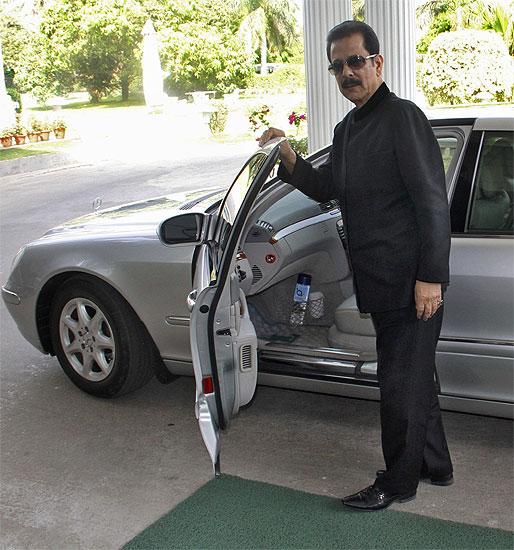
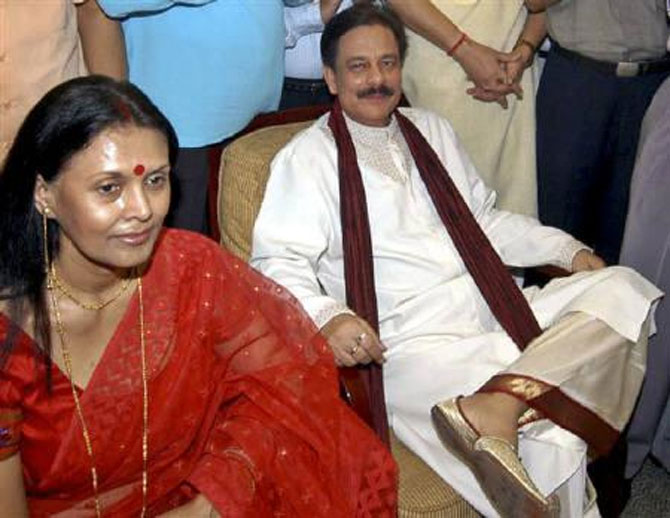
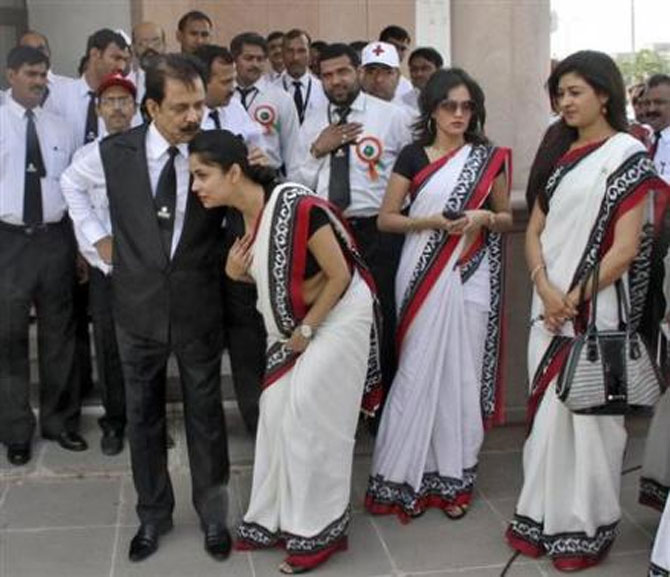
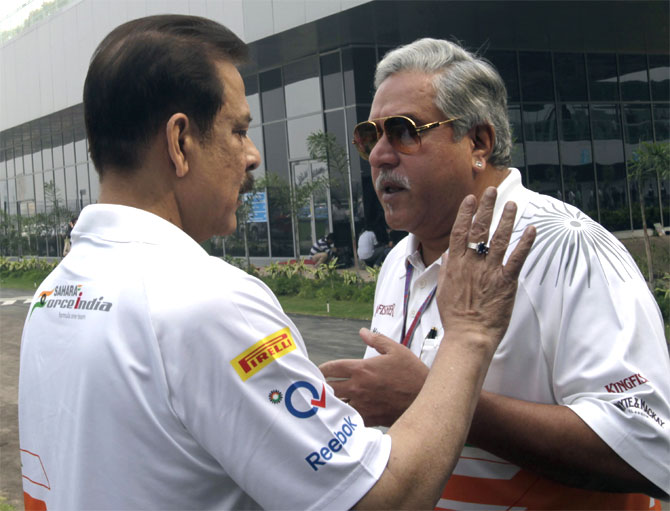
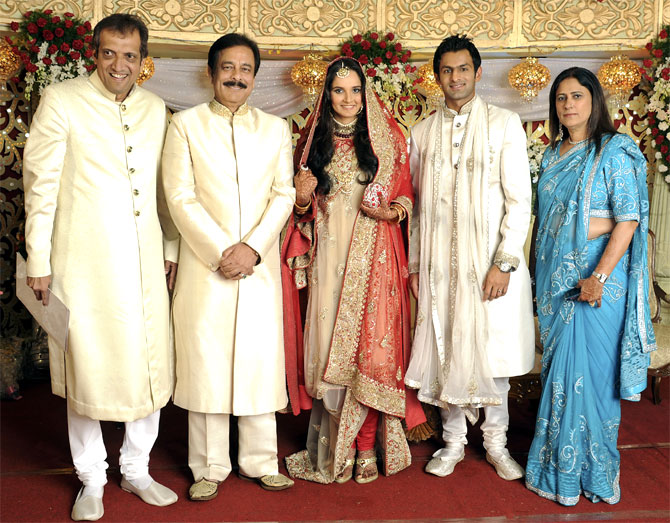

article